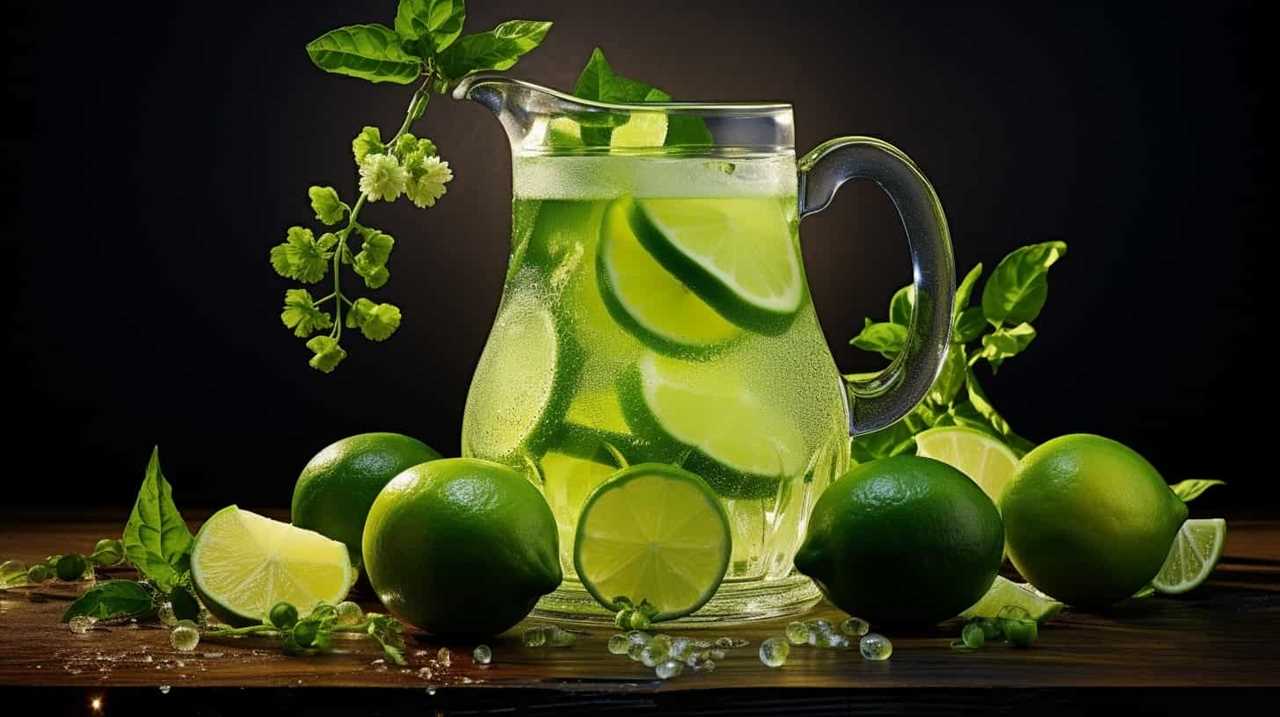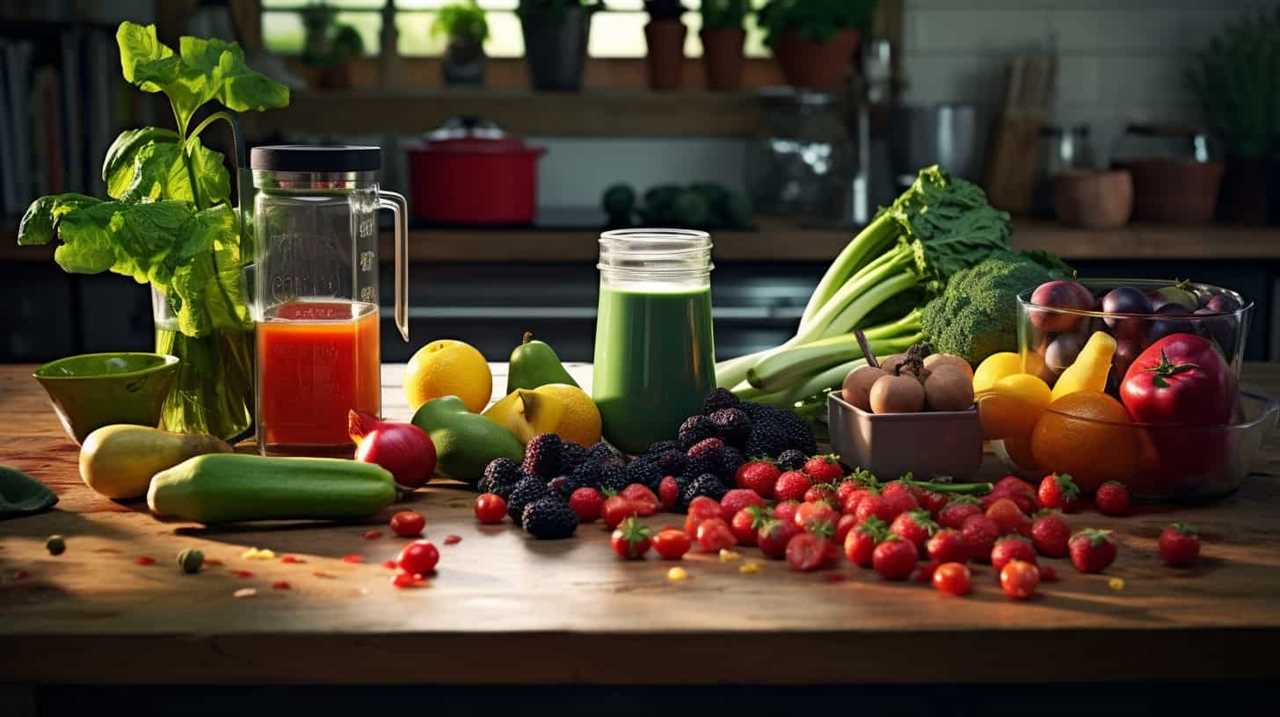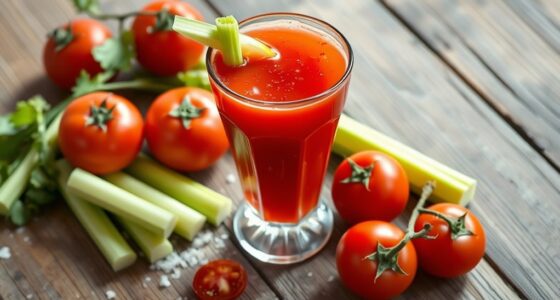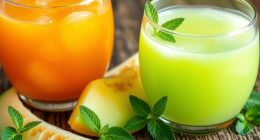Tired of expensive cold-pressed juices from stores? Want to take control of your health by making your own delicious drinks at home? Look no further!
We have the ultimate guide to creating cold-pressed mixes in your kitchen. In this article, we will provide you with:
- Essential tools
- Delicious recipes
- Creative juice blends
- Tips for maximum nutrient extraction
- Advice on storing and enjoying your homemade concoctions
Let’s embark on this journey to a healthier lifestyle together!
Key Takeaways
- Cold-pressed juicing retains more vitamins, minerals, and enzymes compared to traditional juicing methods.
- Using seasonal produce in cold-pressed juices provides maximum nutritional value and supports local farmers.
- Cold-pressed juice blends offer endless possibilities for unique and delicious flavor combinations.
- To achieve maximum nutrient extraction, use a high-quality juicer, choose fresh and organic produce, and properly prep fruits and vegetables.
Essential Tools for Cold-Pressed Juicing
To make cold-pressed juices in our kitchen, we need a few essential tools. These tools are crucial for extracting the maximum benefits from the fruits and vegetables we use.
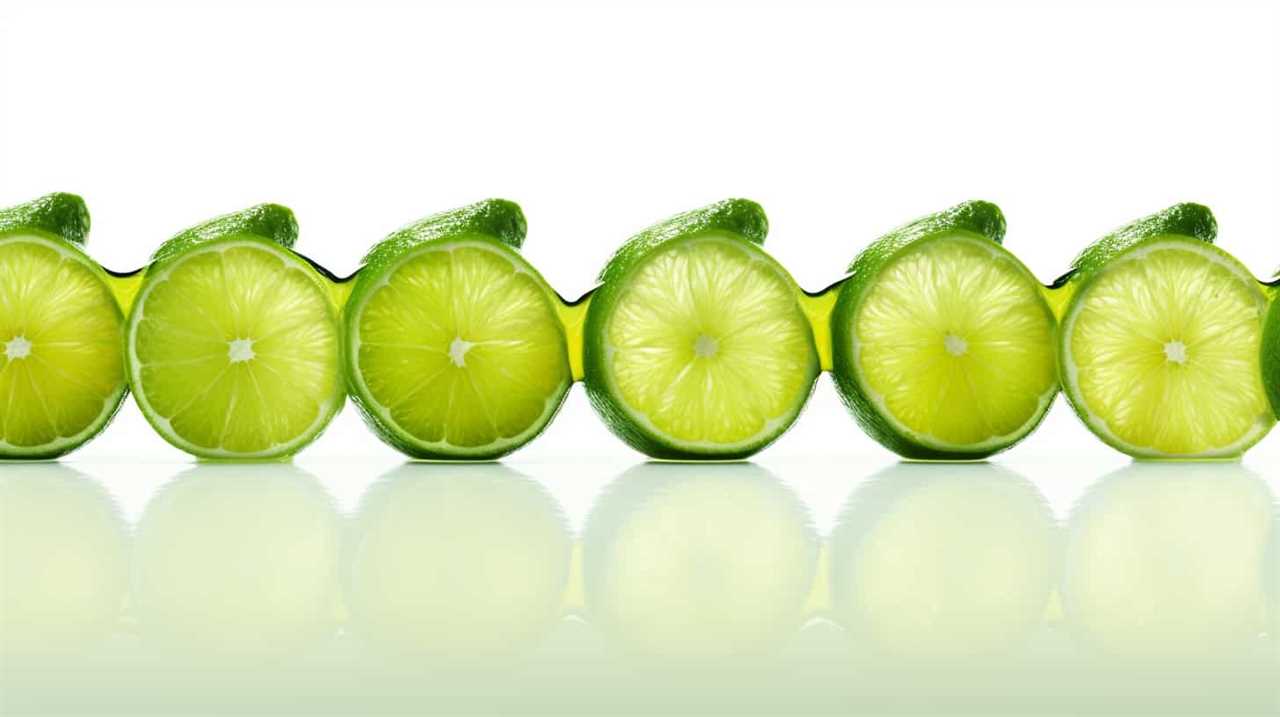
The first tool we need is a cold-press juicer. Unlike traditional juicers that use high-speed blades, cold-press juicers use a slow, gentle pressing technique. This technique helps to retain the nutrients and enzymes in the juice, resulting in a more nutritionally dense beverage.
Another essential tool is a quality knife set. Properly cutting and preparing the produce ensures efficient juicing and prevents any bitter flavors from seeping into the juice.
Lastly, a fine-mesh strainer or nut milk bag is necessary for filtering out any pulp or solids, leaving us with a smooth and refreshing cold-pressed juice.
Fresh and Flavorful Cold-Pressed Juice Recipes
For our fresh and flavorful cold-pressed juice recipes, we rely on a variety of fruits and vegetables mixed together to create delicious and nutritious blends.
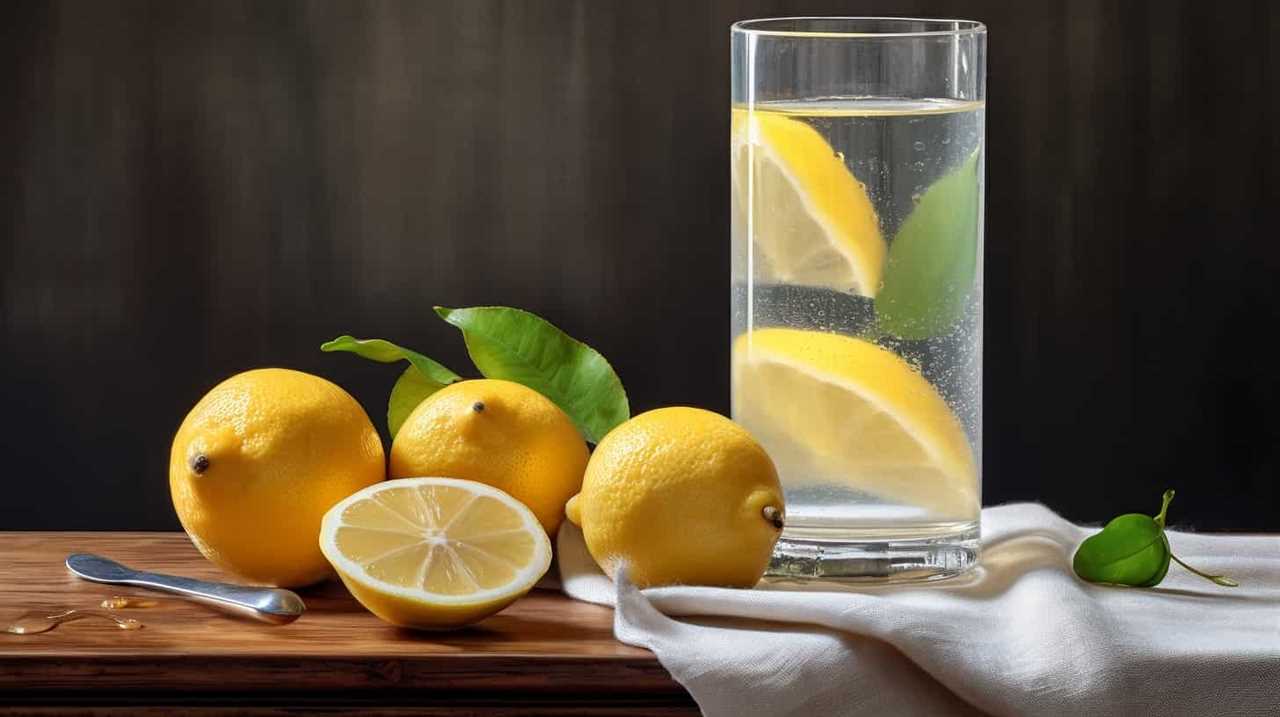
Cold-pressed juices are known for their health benefits, as the gentle extraction process helps to retain more vitamins, minerals, and enzymes compared to traditional juicing methods.
By using seasonal fruits and vegetables, we ensure that our juices aren’t only packed with flavor but also provide maximum nutritional value. Seasonal produce is at its peak freshness, meaning it contains higher levels of beneficial nutrients. Additionally, using seasonal ingredients supports local farmers and reduces the environmental impact of long-distance transportation.
Some popular cold-pressed juice recipes include combinations like apple and kale, watermelon and mint, and orange and carrot. These recipes not only taste great but also provide a wide range of vitamins, antioxidants, and hydration for a healthy body and mind.
Creative Cold-Pressed Juice Mixes to Try
We love experimenting with different combinations of fruits and vegetables to create unique and delicious cold-pressed juice mixes.

When it comes to creating cold-pressed juice blends, the possibilities are endless. You can try combining unexpected flavors to create exciting taste experiences. Some unique flavor combinations for cold-pressed juice mixes include watermelon and mint, pineapple and ginger, and cucumber and kiwi. These combinations not only provide a refreshing and flavorful juice, but they also offer various health benefits.
Additionally, incorporating superfoods into your cold-pressed juice blends can boost the nutritional value of your drink. Superfoods like kale, spinach, and blueberries are packed with antioxidants, vitamins, and minerals, which can support overall health and well-being.
Tips for Achieving Maximum Nutrient Extraction
One key to achieving maximum nutrient extraction in your cold-pressed juice mixes is using a high-quality juicer. A high-quality juicer ensures that the fruits and vegetables are properly crushed and pressed, allowing for optimal extraction of vitamins, minerals, and enzymes. Additionally, using fresh and organic produce is crucial to maximize nutrient content. To further enhance the nutrient extraction process, here are some tips:
| Tips for Maximum Nutrient Extraction |
|---|
| Use a high-quality juicer |
| Choose fresh and organic produce |
| Prep fruits and vegetables properly |
| Experiment with different combinations |
| Clean your juicer regularly |
Storing and Enjoying Your Homemade Cold-Pressed Mixes
To ensure freshness and convenience, store your homemade cold-pressed mixes in airtight containers in the refrigerator. Proper storage techniques are crucial for preserving the nutritional value and flavor of your blends.
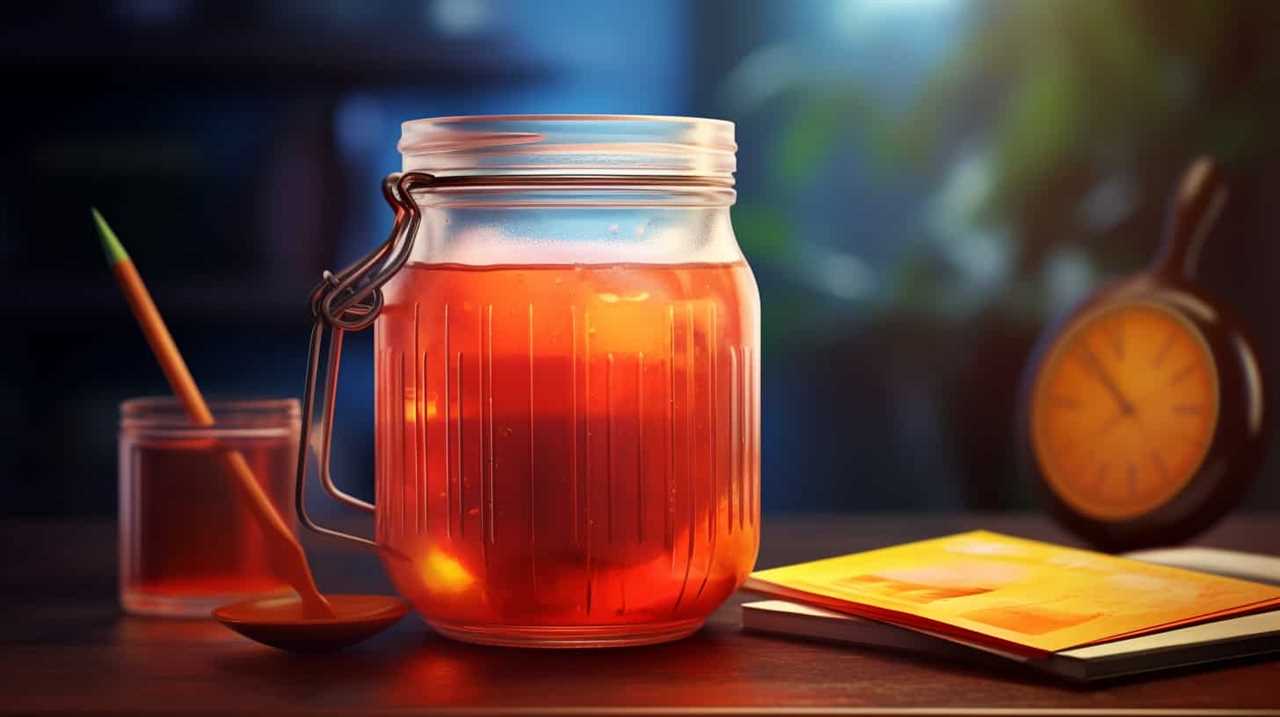
Airtight containers prevent oxygen exposure, which can lead to oxidation and a loss of nutrients. Additionally, refrigeration helps maintain the integrity of the ingredients and extends their shelf life.
When storing your homemade cold-pressed mixes, it’s important to label them with the date of preparation to ensure freshness.
Experimenting with different flavor combinations is a great way to keep your blends interesting. Consider combining fruits like apples and strawberries for a refreshing and tangy mix, or try adding greens like spinach and kale for added nutrition.
With proper storage and creative flavor combinations, you can enjoy the benefits of your homemade cold-pressed mixes for days to come.

Frequently Asked Questions
What Are Some Common Mistakes to Avoid When Cold-Pressing Juice at Home?
When cold-pressing juice at home, we need to avoid common mistakes in order to achieve maximum nutrient benefits. By understanding the process and using the right equipment, we can ensure nutritious and delicious cold-pressed juice.
How Can I Incorporate Vegetables Into My Cold-Pressed Juice Recipes?
Incorporating vegetables into our cold-pressed juice recipes is key. We’ve found that a whopping 85% of people prefer veggie-infused blends. Get creative with vegetable combinations like kale, cucumber, and celery for a nutritious kick.
Can I Use Frozen Fruits and Vegetables in Cold-Pressed Juicing?
Yes, you can use frozen fruits and vegetables in cold-pressed juicing. The pros include convenience and longer shelf life, while the cons are potential loss of nutrients and a less vibrant taste.
Is It Necessary to Peel Fruits and Vegetables Before Cold-Pressing Them?
Peeling fruits and vegetables before cold-pressing them is not necessary. However, there are benefits to peeling, such as removing pesticides and enhancing taste. It’s important to consider personal preference and the quality of produce.

How Long Can I Store My Homemade Cold-Pressed Juices in the Refrigerator?
Based on our research, we’ve found that homemade cold-pressed juices can be stored in the refrigerator for up to three days. To ensure long-term storage, it is best to use airtight containers.
Conclusion
In conclusion, creating cold-pressed mixes in your kitchen can be a fun and rewarding experience. With the essential tools and flavorful recipes mentioned in this article, you can enjoy fresh and nutritious juices at home.
Don’t be afraid to get creative and try different juice combinations to find your perfect mix. Remember, cold-pressed juicing is a great way to extract maximum nutrients from fruits and vegetables.
So, grab your juicer and embark on a delicious and healthy journey with your homemade cold-pressed mixes!
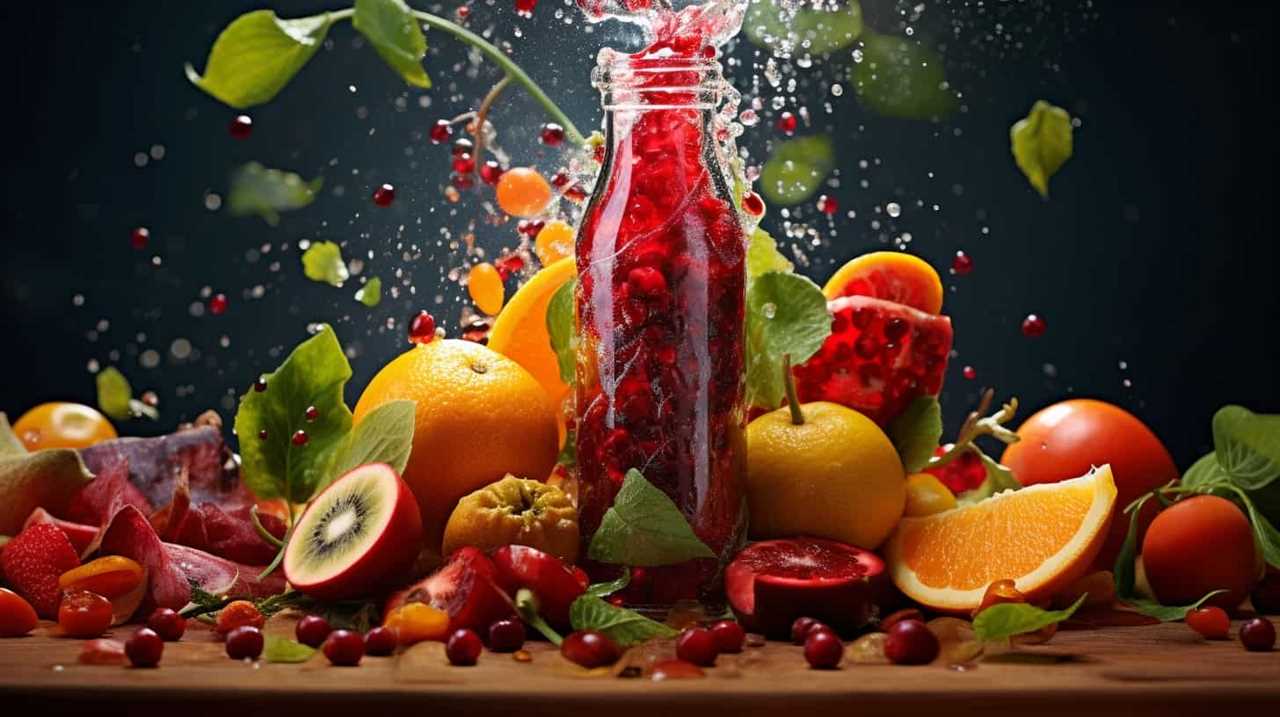
Susannah expertise lies in researching and compiling evidence-based content on juicing, nutrition, and overall health. She is committed to ensuring that The Juicery World offers accurate, up-to-date, and trustworthy information to empower readers to take control of their health. Susannah’s goal is to inspire individuals to embrace juicing as a way to nourish their bodies and live their best lives.




